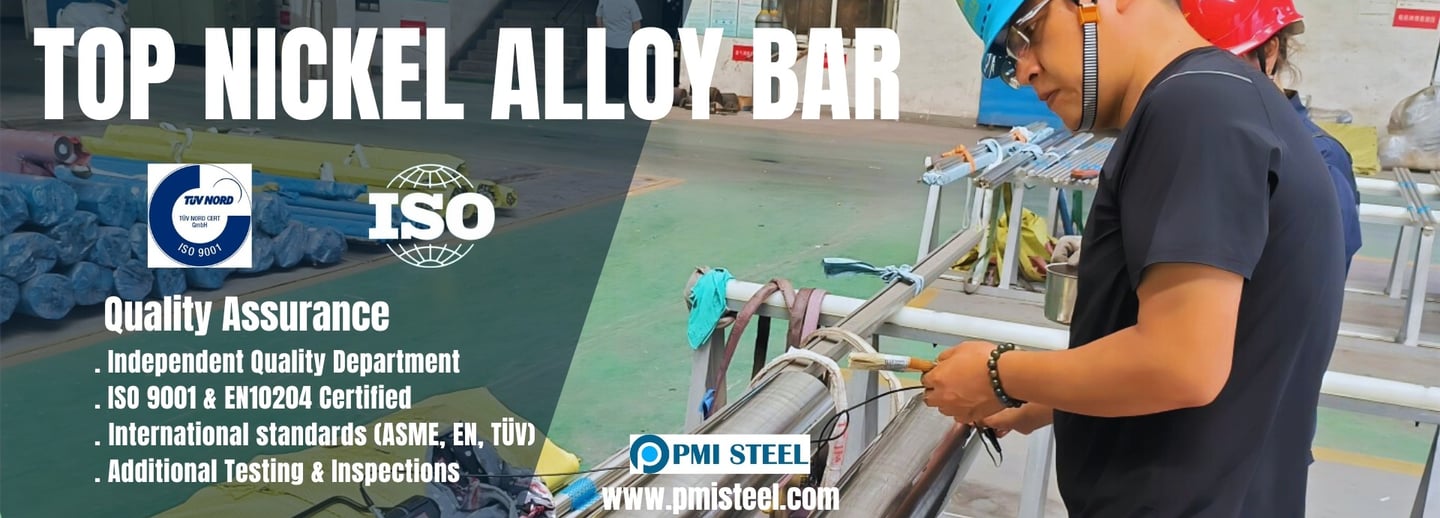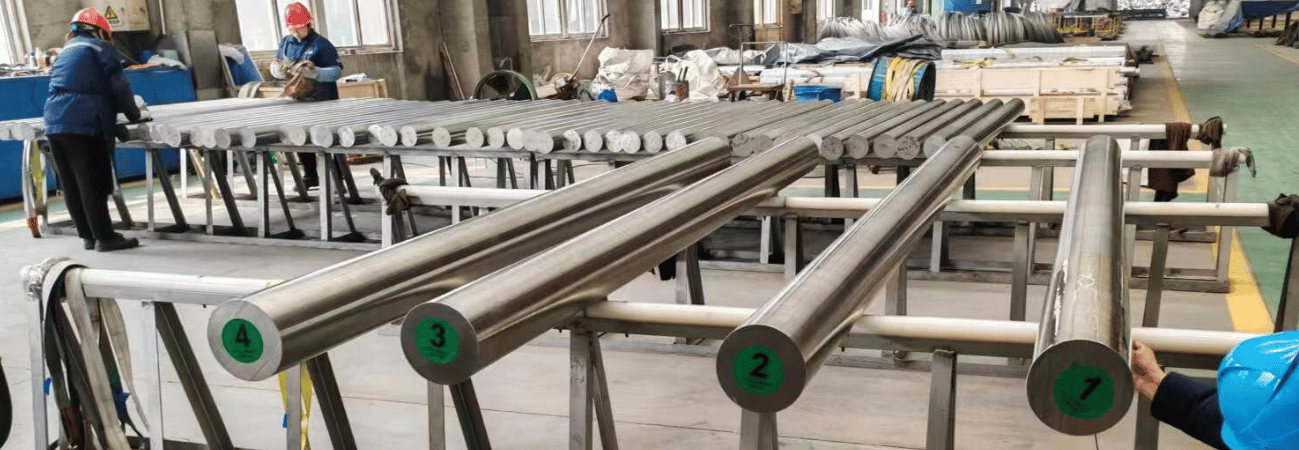Guide to Incoloy Alloys: Properties and Selection From PMI STEEL
Overview: As a professional manufacturer of nickel-based alloy bars, PMI STEEL recognizes the importance of providing comprehensive information regarding the properties and applications of various Incoloy alloys. This guide explores three prominent Incoloy alloys—Incoloy 330, Incoloy 800, and Incoloy 825—highlighting their distinct characteristics and applications, and offering guidance on selecting the appropriate alloy for specific needs.
KNOW-HOWINDUSTRY INSIGHTPRODUCTS NEWS
9/22/20253 min read
Table of Contents
Incoloy 330: A High-Temperature and Oxidation-Resistant Alloy
- Composition and Properties
- Applications
- Selection Considerations
Incoloy 800: A Versatile Alloy for High-Temperature Applications
- Composition and Properties
- Applications
- Selection Considerations
Incoloy 825: Robustness in Harsh Environments
- Composition and Properties
- Applications
- Selection Considerations
Selecting the Right Incoloy Alloy Bar
Conclusion
Incoloy 330: A High-Temperature and Oxidation-Resistant Alloy
Composition and Properties
Incoloy 330 primarily comprises nickel, chromium, and iron, contributing to its high-temperature stability and oxidation resistance. Typical composition includes about 34% nickel, 18% chromium, and iron, with some copper and manganese.
Applications
Incoloy 330 is utilized in industrial furnaces, heat exchangers, and high-temperature services, particularly effective up to about 1,200°F (650°C) in oxidizing conditions. Commonly found in the petrochemical and gas processing industries.
Selection Considerations
Evaluate operating temperatures and oxidative exposure. Incoloy 330 is ideal for prolonged high-temperature applications without significant mechanical property degradation.
Incoloy 800: A Versatile Alloy for High-Temperature Applications
Composition and Properties
Incoloy 800 features a nickel-chromium-iron composition, approximately 32% nickel and 21% chromium, with a maximum of 0.10% carbon. It offers significant resistance to carburization and sulfidation.
Applications
This alloy is used in oil and gas production, heat exchangers, and power plants, where it withstands high pressures and temperatures, ensuring mechanical strength and corrosion resistance in industrial environments.
Selection Considerations
Analyze specific application conditions, concentrating on temperature ranges (typically 1,200°F [650°C] to 1,600°F [870°C]) and corrosive environments.
Incoloy 825: Robustness in Harsh Environments
Composition and Properties
Incoloy 825 contains nickel, chromium, iron, with copper and molybdenum, enhancing its corrosion resistance. Typical composition includes approximately 38% nickel, 20% chromium, 3% molybdenum, and 2.5% copper.
Applications
This alloy excels in highly corrosive settings, notably in oil and gas extraction, chemical processing, and waste treatment, particularly in environments with sulfuric and phosphoric acids.
Selection Considerations
Assess the specific chemical environment. Incoloy 825 is suited for harsh acids due to its resistance to localized corrosion and pitting.


Selecting the Right Incoloy Alloy Bar
When it comes to choosing the appropriate Incoloy alloy bar for your specific application, a systematic approach is essential. Begin by understanding the operating conditions of your project:
Temperature Range: Identify the maximum and minimum temperatures that the alloy will endure. This will greatly influence your choice, as certain alloys perform better under specific thermal conditions.
Corrosive Environment: Evaluate the chemical composition of the environment where the alloy will be used. Incoloy 330, 800, and 825 exhibit varying degrees of resistance to oxidizing, reducing, and numerous acidic conditions.
Mechanical Requirements: Establish the mechanical strength requirements for your applications. Consider factors such as tensile strength, yield strength, and ductility.
Compatibility and Fabrication: Assess compatibility with existing materials and the ease of fabrication and welding for assembly and repair purposes. Different alloys may require specific handling and manufacturing processes.
Cost vs. Performance: Finally, weigh the cost implications against the performance benefits offered by each alloy. Understanding the long-term value of selecting the right material, considering maintenance cycles and product lifespan, is paramount.
Conclusion
Understanding the unique properties and applications of Incoloy alloys—Incoloy 330, Incoloy 800, and Incoloy 825—is essential for selecting the right material for specific projects. By evaluating temperature, corrosiveness, mechanical requirements, and cost-effectiveness, clients can make informed decisions that enhance performance and reliability.
PMI STEEL is a professional global supplier in China specializing in Nickel Alloy Bars.
For more information on the heat-resistant properties of these superalloys and their applications, please visit our website www.pmisteel.com or contact at sales@pmisteel.com


Guide to Incoloy Alloys: Properties and Selection From PMI STEEL(2)
Guide to Incoloy Alloys: Properties and Selection From PMI STEEL(1)
Foshan PMI Industry, a distinguished supplier of Nickel Alloy Bars, is committed to delivering top-tier products to our global clientele. Our comprehensive range of nickel alloy bars encompasses industry-leading materials such as Inconel, Incoloy, Hastelloy, and Nitronic, renowned for their superior corrosion resistance and mechanical properties, particularly in high-temperature applications. With a meticulously maintained 1200 sq.m. warehouse, we ensure the availability of standard nickel alloy products, including Alloy 600, Alloy 718, Alloy 800, and Alloy C276, to meet the diverse and time-sensitive needs of our customers.
Email : sales@pmisteel.com
Mobile: + 86 139 2726 3132
© 2020. PMI STEEL . All rights reserved.
Contact
NO.18,Xinye 4 Road, Shunde Distric, Foshan City,Guangdong P.R. China, 528300
Phone : + 86 757 2639 1388


